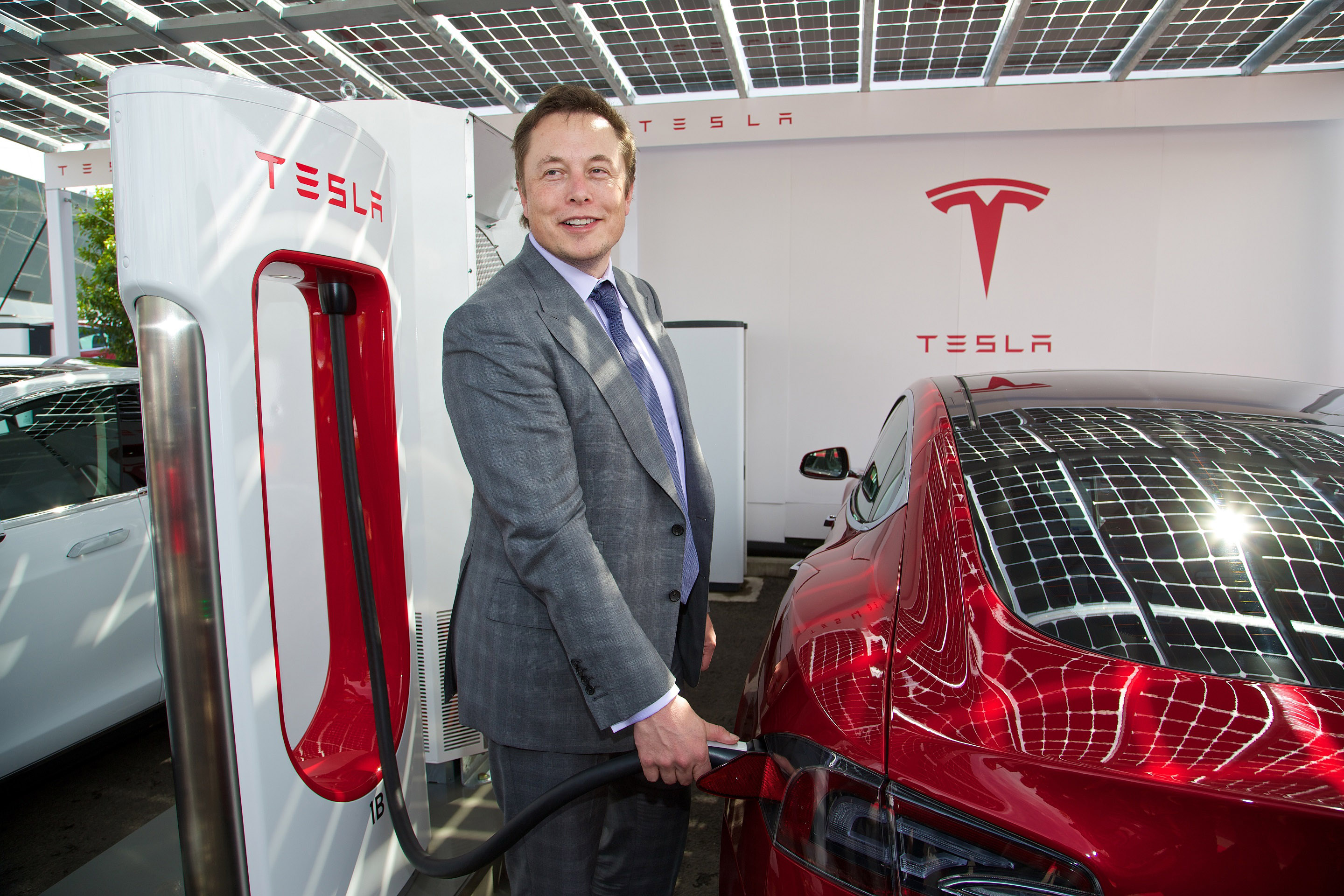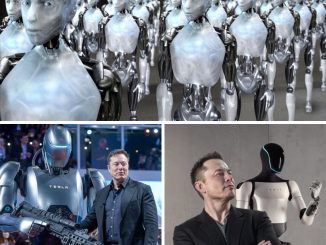
In a groundbreaking move that could reshape the future of transportation, Elon Musk has unveiled an entirely new type of engine for vehicles: the water-powered engine. This revolutionary technology has the potential to not only change the automotive industry forever but also address one of the most pressing environmental challenges of our time—climate change.
Musk’s innovation could drastically reduce the world’s dependence on fossil fuels, cut down carbon emissions, and provide a sustainable alternative to the current methods of powering vehicles.
The water-powered engine uses a method of extracting hydrogen from water, which is then used to fuel the vehicle, emitting only water vapor as exhaust. This innovation has been hailed as a game-changer, as it offers a cleaner, more sustainable energy source while maintaining the power and efficiency needed for modern transportation.
Moreover, the potential financial impact is staggering, with Musk estimating that the water engine could generate up to $500 billion in annual profits for the global automotive industry.
This article will explore the details of Musk’s water-powered engine, how it works, the potential environmental benefits, and the far-reaching implications for the auto industry, as well as the broader world economy.
If Musk’s vision comes to fruition, the automotive industry—and the planet—could see a major transformation.
Elon Musk has long been a champion of sustainable energy solutions. Through Tesla, he has already pushed the boundaries of electric vehicles (EVs), solar energy, and energy storage.
Now, with the water-powered engine, Musk is taking his mission to reduce the world’s dependence on fossil fuels to the next level. By extracting hydrogen from water, the new engine can provide a virtually limitless source of energy for vehicles, without the harmful emissions associated with traditional combustion engines.
The principle behind the water-powered engine is deceptively simple. Water (H2O) is made up of two hydrogen molecules and one oxygen molecule. By using electrolysis, the hydrogen molecules are separated from the water and stored.

This hydrogen is then used to fuel the engine, with only water vapor released as a byproduct. Unlike traditional gasoline or diesel engines, which release harmful carbon dioxide (CO2) and other pollutants into the atmosphere, the water engine is completely clean, with no harmful emissions.
The concept of hydrogen-powered vehicles is not new; however, the key innovation in Musk’s design lies in the engine’s ability to extract and use hydrogen from water in a way that is both efficient and cost-effective. While hydrogen fuel cells have been used in some vehicles in the past, they have traditionally been expensive and difficult to scale.
Musk’s breakthrough technology overcomes many of the limitations of previous hydrogen fuel systems, making the water-powered engine a viable alternative to traditional internal combustion engines.
One of the most significant advantages of the water-powered engine is its potential to reduce carbon emissions and combat climate change. The transportation sector is one of the largest contributors to greenhouse gas emissions, with millions of vehicles around the world emitting CO2 and other pollutants into the atmosphere every day.
Musk’s water engine offers a solution to this problem, as it produces no harmful emissions whatsoever.
By switching to water-powered vehicles, the automotive industry could play a pivotal role in reducing global carbon emissions. According to estimates, the widespread adoption of water-powered vehicles could cut transportation-related emissions by as much as 90%.
This would have an enormous impact on the planet’s overall carbon footprint, contributing to efforts to meet the climate goals outlined in the Paris Agreement and helping to mitigate the worst effects of global warming.
Furthermore, the water engine eliminates the need for fossil fuels altogether, reducing the global demand for oil and gas. The extraction, refinement, and transportation of fossil fuels have long been associated with environmental degradation, including oil spills, deforestation, and water contamination.
By shifting to a water-based fuel source, the automotive industry could drastically reduce its reliance on these destructive practices.
Beyond its environmental benefits, Musk’s water-powered engine could also have a massive financial impact on the automotive industry. With an estimated $500 billion in annual profits, this new technology could represent a significant boon to both the car manufacturers and the global economy as a whole.
The reason behind such a staggering profit figure lies in the potential for cost savings and new revenue streams. Traditional internal combustion engines rely on expensive fossil fuels, and their production and maintenance come with high environmental and economic costs.
In contrast, the water-powered engine would significantly reduce the cost of fuel, as water is both abundant and cheap. This could lead to lower operating costs for consumers and businesses alike, while also reducing the financial burden on governments that currently subsidize fossil fuels.
Moreover, the water-powered engine could unlock new markets and opportunities for companies involved in hydrogen production, electrolysis technology, and fuel cell manufacturing. The need for clean energy infrastructure—such as water refueling stations and hydrogen production plants—could create a new industry worth billions of dollars.
In addition, the widespread adoption of water-powered vehicles would likely drive the demand for new energy storage and distribution solutions, further boosting economic growth.
For automakers, the shift to water-powered vehicles could lead to massive profits. Tesla, in particular, stands to benefit from the technology, given its established position as a leader in electric vehicles and clean energy solutions.
The company has already proven its ability to innovate and scale new technologies, and Musk’s water engine could be the next step in Tesla’s journey to revolutionize the automotive industry.
While the potential of the water-powered engine is enormous, there are still several challenges to overcome before it can be adopted on a large scale. The most immediate challenge is the development of the necessary infrastructure to support water-powered vehicles.

Unlike electric vehicles, which can be charged at home using existing electricity grids, water-powered cars will require a network of refueling stations capable of extracting and storing hydrogen from water. Building this infrastructure will require significant investment from both the private and public sectors.
Another challenge is the cost of manufacturing the water-powered engines themselves. While water is abundant and cheap, the technology required to extract and store hydrogen from water is still relatively expensive.
Tesla and other companies will need to continue refining the technology to make it more cost-effective and scalable. However, Musk’s track record of overcoming technical challenges with Tesla and SpaceX suggests that this is a hurdle he is more than capable of overcoming.
Additionally, there are regulatory and safety concerns surrounding the use of hydrogen as a fuel source. While hydrogen is a clean and efficient fuel, it is also highly flammable, and its storage and transportation require special precautions.
Governments will need to create new safety standards and regulations for the production, storage, and use of hydrogen in vehicles. However, given Musk’s experience navigating regulatory landscapes, he is likely to work closely with lawmakers and industry leaders to address these concerns.
The introduction of the water-powered engine marks a major turning point in the automotive industry. If successful, Musk’s innovation could revolutionize not only how we power our vehicles but also how we think about energy consumption and sustainability.
With the ability to eliminate harmful emissions and provide a cost-effective, renewable source of energy, water-powered vehicles have the potential to change the world.
Looking ahead, it is likely that the water engine will play a central role in the future of transportation. As the technology matures and more automakers adopt it, the global transportation sector could see a dramatic shift away from fossil fuels and toward clean, sustainable energy sources.
The environmental benefits, economic potential, and technological innovation of Musk’s water-powered engine make it one of the most promising developments in the fight against climate change.

In conclusion, Elon Musk’s water-powered engine represents a bold step forward in the quest for sustainable, environmentally friendly transportation. By tapping into the abundant resource of water and harnessing its potential to power vehicles, Musk’s innovation could have far-reaching implications for the automotive industry, the global economy, and the planet itself. As with all of Musk’s ventures, the road ahead may be challenging, but the potential rewards are immense, and the future of transportation looks brighter than ever.



